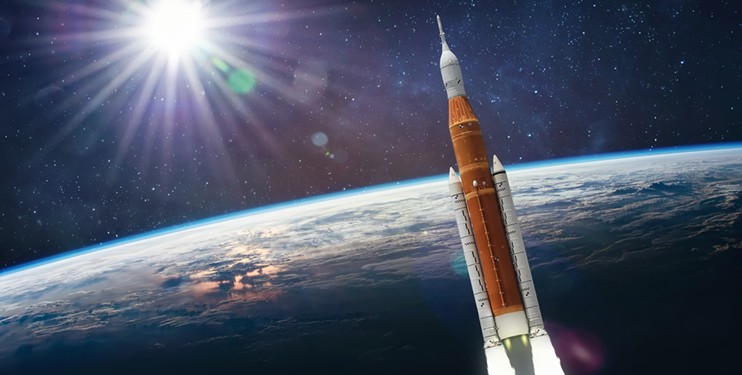Son of Zeus, god of the sun, immortal. Olympian. All know Apollo. Influential still, if only in the realm of philosophical ideals and the context of ages past. His time, however, is nearly done. Artemis — Apollo’s twin, goddess of the hunt, for millennia intimately associated with our moon — stands poised to outleap her brother, and so his namesake.
NASA’s Apollo program was wildly ambitious and commensurately successful, outpacing Soviet efforts and landing humans for the first time on an entirely other celestial body. Its booster system, the Saturn V, was far more energetic than any previously launched and handily outrivals any rocket used even today. But this is not Apollo’s day.
On Aug. 29, Should all go well, Artemis I — the spiritual successor to the Apollo and unrealized Nova programs — will trail fire through the Florida sky in a maiden bid to thunder her way not merely to the moon, but beyond it in a distant retrograde lunar orbit hurling Orion into deep space, a first for crew-capable craft.
Strikingly similar to the familiar cone-shaped Apollo command module and appearing only somewhat larger, the external profile of Orion’s crew module belies its sophistication. Capable of supporting six astronauts — double the capacity of Apollo moonshots — for up to three weeks, Orion boasts 50 percent increased internal volume over Apollo, cutting-edge radiation protection, the heaviest, most advanced reentry heat shield ever devised and an upgradable suite of ultramodern instrumentation.
Though NASA safety protocols require such maiden voyages to be uncrewed when possible, directed remotely by NASA Mission Control, Artemis I will, after a fashion, ferry a few passengers. Captain Moonikin Campos — a mannequin arrayed with radiation, acceleration, and vibration sensors and named for NASA electrical engineer Arturo Campos, credited as invaluable throughout the realtime problem-solving charge that saved all three Apollo 13 astronauts — will be aboard. Moonikin won’t be alone; Shaun the Sheep and Snoopy round out the manifest.
Collaboration between NASA and “Peanuts” creator Charles M. Schulz predates even Neil Armstrong’s famed first step. In appreciation, Apollo 10 astronauts christened their command and lunar modules Charlie Brown and Snoopy, respectively. Weatherford’s own Thomas Stafford piloted Snoopy to within nine miles of the lunar surface, the final test before Apollo 11 would touch down.
The veritable beast vaulting Orion past Earth’s gravitational grip is NASA’s long-awaited Space Launch System, the most powerful vehicle ever built. While Apollo’s Saturn V produced 7.8 million pounds of thrust upon launch, the SLS rocket, through combination of first-stage engines and external boosters jettisoned space shuttle-style after depletion, will generate 8.8 million. Ultimately, even more powerful variants of the SLS will cast crew and cargo as far as Mars and the resource-rich asteroid belt beyond.
Artemis I leads the way for Artemis II, a 2024 crewed moon flyby intended to finalize component testing. In 2025, Artemis III will land the first woman and person of color on the lunar surface. They will be the first to tread moondust since 1972.










